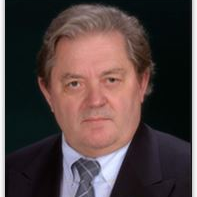Vitamin C and Carbohydrates in Human Physiology: Mechanism of Action
A special issue of International Journal of Molecular Sciences (ISSN 1422-0067). This special issue belongs to the section "Biochemistry".
Deadline for manuscript submissions: closed (28 February 2022) | Viewed by 5079
Special Issue Editor
Interests: keratinocyte; wound healing; iv. ascorbic-acid; psoriasis; drug allergy; cell energetics
Special Issues, Collections and Topics in MDPI journals
Special Issue Information
Dear Colleagues,
Vitamin-C (ascorbic acid, AA) is a weak sugar acid structurally related to glucose. Since the discovery of AA, its known biological functions are continually expanding. Ascorbate acts as an electron-donor, keeping iron in the ferrous state. AA affects the expression of a wide array of genes, for example, via the HIF system and the epigenetic landscape of cells and tissues. All known physiological and biochemical functions of AA are due to its action as an electron donor. The ability to donate one or two electrons makes AA an excellent reducing agent and antioxidant. Ascorbate readily undergoes pH-dependent autoxidation creating hydrogen peroxide (H2O2).
In vitro evidence suggests that vitamin C functions at low concentrations as an antioxidant. It is also known that AA may have pro-oxidant activity at high concentrations. This character of AA might be translated to a clinical benefit. In vitro obtained results and murine experiments consequently prove the cancer cell's cytotoxic effect of AA, while current clinical evidence for high-dose IV vitamin C's therapeutic effect is ambiguous. The difference might be caused by missing the AA's action's knowledge.
Early evidence has suggested that the ketogenic diet may help treat several cancer types. The scientific background of this field is also incomplete.
The Accurate characterization of cells' energy system, clarifying glucose and vitamin C's role, maybe the key to explaining the above questions.
The Vitamin C and carbohydrates in human physiology Issue of IJMS aims to collect and publish studies answering the questions regarding glucose deprivation and AA's way of action. Results of original research reports, molecular and biochemical analyses of cells in culture, relevant animal models (guinea pigs, zebrafish, knock-out mice), and clinical studies are invited. Negative or provocative findings are also encouraged to provide an unbiased scientific information source.
Dr. Jànos Hunyadi
Guest Editor
Manuscript Submission Information
Manuscripts should be submitted online at www.mdpi.com by registering and logging in to this website. Once you are registered, click here to go to the submission form. Manuscripts can be submitted until the deadline. All submissions that pass pre-check are peer-reviewed. Accepted papers will be published continuously in the journal (as soon as accepted) and will be listed together on the special issue website. Research articles, review articles as well as short communications are invited. For planned papers, a title and short abstract (about 100 words) can be sent to the Editorial Office for announcement on this website.
Submitted manuscripts should not have been published previously, nor be under consideration for publication elsewhere (except conference proceedings papers). All manuscripts are thoroughly refereed through a single-blind peer-review process. A guide for authors and other relevant information for submission of manuscripts is available on the Instructions for Authors page. International Journal of Molecular Sciences is an international peer-reviewed open access semimonthly journal published by MDPI.
Please visit the Instructions for Authors page before submitting a manuscript. There is an Article Processing Charge (APC) for publication in this open access journal. For details about the APC please see here. Submitted papers should be well formatted and use good English. Authors may use MDPI's English editing service prior to publication or during author revisions.
Keywords
- ascorbate
- oxidative stress
- hydrogen peroxide
- cancer
- intravenous vitamin C
- nutrition therapy
- high-dose vitamin C therapy
- iron–sulfur-protein
- metal homeostasis
- biogenesis
- clinical trials






